Syn.: Anacampseros cepaea (L.) Willd., Cepaea caesalpini Fourr., Sedum amani Post, Sedum calabrum Ten., Sedum gallioides All., Sedum spathulatum Waldst. et Kit., Sedum strictum K. Koch, Sedum tetraphyllum Sm.
Family: Crassulaceae J. St.-Hil.
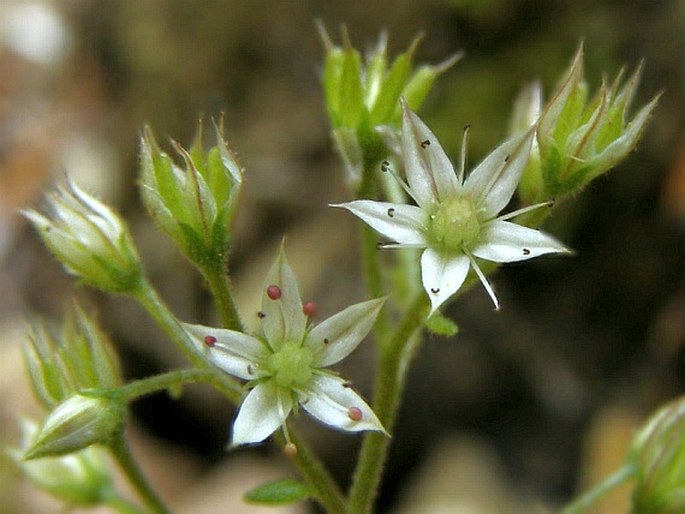
Distribution: Mediterranean and submediterranean species native to Tunisia, Algeria, Spain, France, Switzerland, the Apennine Peninsula, Sicilia, Sardinia, Corse, the Balkan Peninsula, Romania, Turkey, Syria and Lebanon. It is naturalized in the Netherlands and Germany.
Ecology: Shaded and humid rocks, steep slopes with bare soil patches in the forests, road margins and other similar habitats. Usually on carbonates, up to elavations about 1500(–2000) m. Flowering from June to August.
Description: A biennial plant, hibernating with a rosette, usually densely glandular-pubescent throughout. Leaves in whorls of 4 at least below, above sometimes alternate, flat, obovate or spathulate, to 3 cm long, obtuse, the lower ones petiolate and sometimes glabrous. Flowering shoots simple or branched from the base, 10–40 cm long. Inflorescence a lax, many-flowered panicle. Flowers 5-merous, pedicellate. Sepals triangular, 1–2 mm long, acute. Petals white, c. 5 mm long, acuminate. Anthers red. Follicles erect. Seeds pale brown.
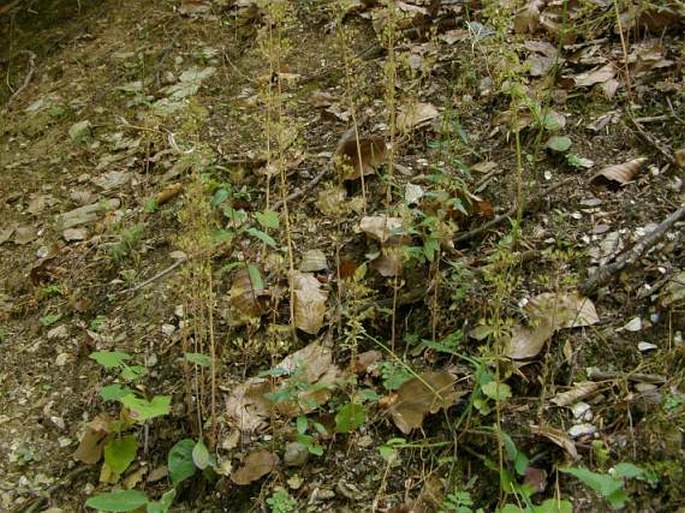
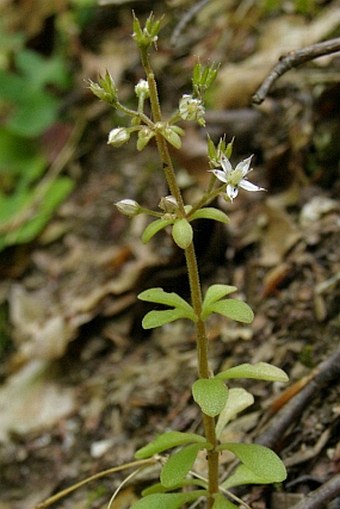
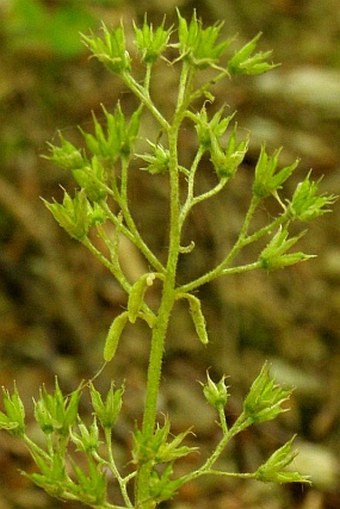
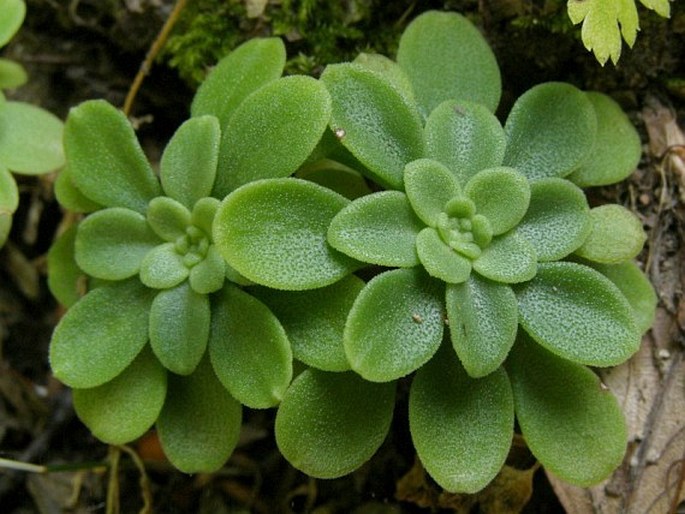
These images were taken in Macedonia, Sharr planina, Duf (August 4, 2012).


